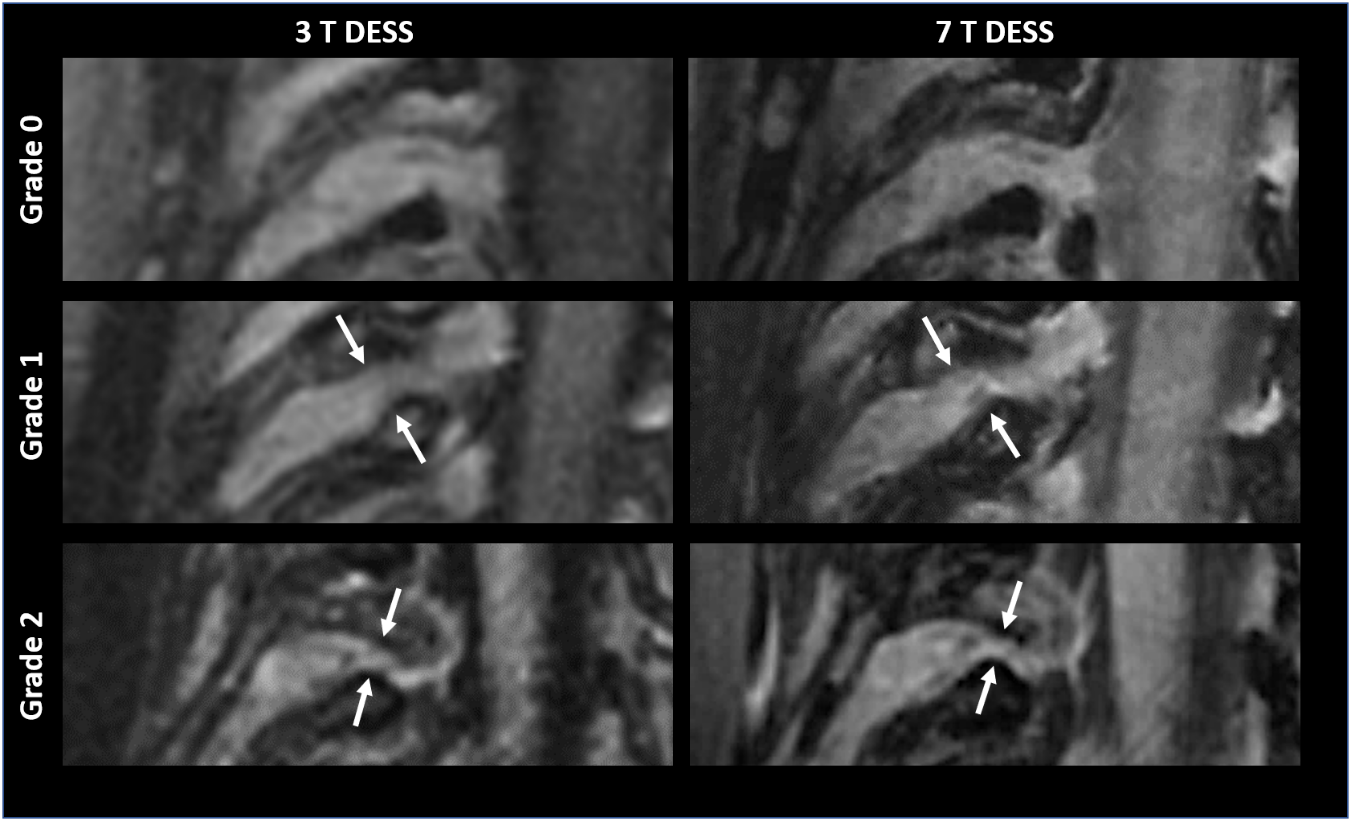Research in Radiology
7T MRI of Cervical Nerve Root Compression
Neck pain is a common complaint and is often caused by irritation of a nerve root. Most commonly, degeneration of the intervertebral discs or facet joints leads to a narrowing of the neuroforamen, with disc material or bone overgrowth resulting in a compression of the nerve root. In a standard clinical MRI at lower field strengths, the nerve compression is usually not easily visible, and indirect imaging signs are used to obtain the diagnosis. The 7 Tesla (T) MRI at Balgrist Campus makes it possible to acquire images with a substantially higher spatial resolution and to visualize the compressed nerve directly.
In our recent study, 48 patients with cervical radiculopathy were examined on the 7T MRI scanner before undergoing surgery. All patients also underwent a standard 3T MRI of the cervical spine. We acquired a 3-dimensional DESS (dual-echo steady-state) MRI sequence that we optimized for nerve imaging. It was possible to visualize the anatomy of the cervical nerve roots, the individual nerve rootlets that form each nerve, as well as the dorsal root ganglia with a high resolution. With this technique it was possible at 7T MRI to detect nerve root compressions directly between the vertebrae with a high level of diagnostic confidence, while at 3T MRI the results were insufficient. The 7T MRI examination also allowed a much better correlation between the grade of nerve root compression and patient symptoms of sensory and motor dysfunction.
The assessment of nerve roots at 7T MRI improves the visualization of nerve root compressions, and our study is a crucial step for the future implementation of high-resolution cervical spine MRI in clinical practice.
7T-MRI-Bildgebung der zervikalen Nerven
Nackenschmerzen werden häufig durch Reizung der Nervenwurzeln verursacht. Degenerierte Wirbelkörper und Facettengelenke können zu einer Kompression der Nervenwurzeln führen. In klinischen MRI-Standarduntersuchungen bei normaler Feldstärke ist diese Nervenwurzelkompression meist nicht direkt auszumachen und die Diagnose wird nur indirekt gestellt. Ein 7T-MRI-Gerät am Balgrist Campus ermöglicht es, komprimierte Nerven mit hoher Auflösung sichtbar zu machen. In dieser Studie wurden 48 Patientinnen und Patienten mit Nackenschmerzen präoperativ untersucht. Mittels einer speziell für die Nervenbildgebung optimierten MRI-Sequenz war es möglich, die präzise Anatomie der Nervenwurzeln, Nervenfasern und Spinalganglien zu erkennen. Diese Technik zeigt die Nervenwurzelkompression zwischen den einzelnen Wirbeln mit hoher diagnostischer Genauigkeit unmittelbar an. Unsere Resultate leisten einen wichtigen Beitrag für die zukünftige klinische Anwendung der 7T-MRI-Bildgebung der Nerven der Halswirbelsäule.
At a Glance
7T MRI of Patients with Radiculopathy
Key Collaborators
Project lead: Prof. Dr. med. Reto Sutter
PD Dr. med. Georg Feuerriegel
Departments and Partners
Balgrist University Hospital: Dept. of Radiology
Clinical Relevance
7T MRI enables a better detection of cervical nerve root compression.
Further Information
> Investigative Radiology

